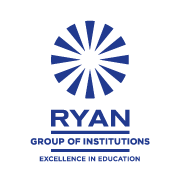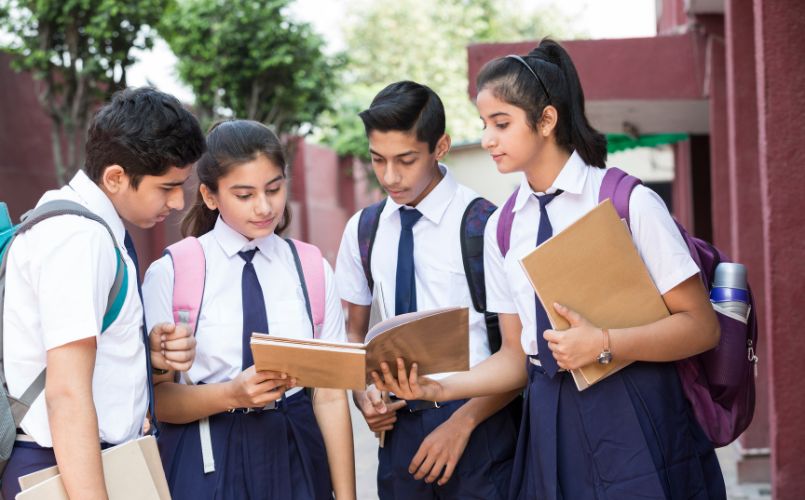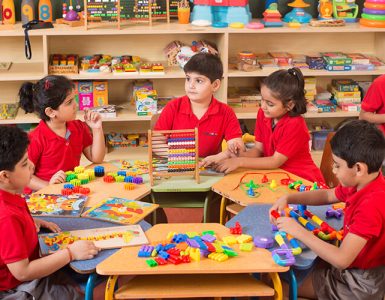Recently there has been much chatter about peer tutoring and collaborative learning which is said to be emerging as effective strategies that go beyond traditional teaching methods creating a mutually beneficial academic environment. Peer tutoring involves students sharing and acquiring knowledge collectively tackling subjects to make learning more accessible. Rooted in cooperative learning principles this approach not only enhances academic achievement but also cultivate essential life skills like empathy, communication and leadership.
India, historically has placed value on peer based learning, drawing inspiration from ancient gurukuls where students lived and learned together supporting each other’s educational path. Today this tradition is noticeable in peer tutoring programs that adapt to contemporary educational requirements while upholding core values of mutual respect and shared development.
These methods have demonstrated an improvement in student’s comprehension of subjects leading to enhanced academic performance. Furthermore they play a role; in creating a supportive classroom community where students feel appreciated and empowered to contribute to one another’s educational growth.
The advantage of peer tutoring its influence in learning is evident as these methods go beyond just academic success. They focus on creating a welcoming, supportive and interactive learning environment where each student can excel. By taking up these approaches schools and educators can help students reach their potential and prepare them for a successful future both inside and outside the classroom.
Exploring the Benefits of Peer Tutoring
The spirit of peer tutoring lies in its ability to revolutionize the experience by making learning more interactive, engaging and notably effective. It’s crucial to acknowledge its advantages especially within the framework of Indian education where various learning styles and educational backgrounds are prevalent.
Improved Academic Performance
One significant argument supporting peer tutoring is its impact on students’ academic performance. Studies show that students engaging in peer tutoring sessions demonstrate enhancements, in their grasp of subjects resulting in improved grades and higher test scores. This progress is credited to the attention and tailored learning methods facilitated by peer tutoring.
In comparison to classroom setups, where a one size fits all approach is often necessary due to logistical constraints peer tutoring offers a more personalized learning environment.
Social and Emotional Skills Development
In addition to progress, peer tutoring nurtures the growth of crucial social and emotional skills. Through engaging in peer led sessions students practice expressing their thoughts actively listening and giving feedback. This interaction not boosts academic confidence but also hones interpersonal abilities essential for success in various life scenarios. Furthermore the sense of community and belonging that emerges from these interactions is priceless in a diverse country like India where appreciating different perspectives is a key life skill.
Empowerment and Confidence
Engaging in peer tutoring empowers students by enhancing their self esteem and confidence. By teaching their peer’s students reaffirm their knowledge and capabilities thereby strengthening their self assurance. This empowerment holds significance in the Indian educational realm where the emphasis, on academic excellence can sometimes overshadow individual learning process.
Peer tutoring provides a platform for students to not excel as learners but also to take on the role of educators showcasing the unique contributions each student brings to the learning environment.
The benefits of peer tutoring go beyond success; they influence the quintessence of educational experiences by enriching them with inclusivity and profound benefits for students. As we go deeper into collaborative learning approaches it becomes evident that peer tutoring plays a role, in fostering a supportive and empowering academic community.
So how does collaborative learning cultivate a supportive academic environment?
With collaborative learning, classrooms become vibrant spaces where students feel empowered to share their thoughts, question assumptions support each other. This sense of community holds importance, where diversity in classroom poses both challenges and opportunities for enhancing educational experiences. By embracing collaborative learning, we can enable students to gain insights, from different viewpoints and promote a unified academic community.
How Does Collaborative Learning Function in Real Life?
Collaborative learning can be noticeable in many ways, such as group projects, study teams, peer led discussions and workshops. The crucial aspect is providing opportunities for students to collaborate towards a shared objective. Educators have introduced collaborative learning through activities like classroom debates peer reviews sessions and interactive group assignments. They leverage technology alongside teaching methods to facilitate effective collaboration.
Is peer learning practical in large classrooms?
Although managing peer learning in sizable classrooms present challenges, it is indeed possible and advantageous. Strategies like dividing students into groups or utilizing digital platforms, for group work can help address these obstacles effectively. Additionally peer learning in bigger classroom sizes can teach students to take charge of their own education promoting independence and self drive.
Way Forward
With the increasing popularity of learning in Indian schools there are exciting prospects for building more inclusive, engaging and efficient educational settings. By embracing the challenges and benefits associated with peer learning educators and students can collaborate to shape a future for education in India.
Introducing Peer Tutoring Initiatives
As we get into the practicalities of implementing peer tutoring and collaborative learning approaches in classrooms various nuanced questions naturally arise that reflect the curiosity and concerns of educators and parents alike. Let’s explore these queries further by providing insights and recommendations, on establishing peer tutoring programs.
So What’s the Feasibility of Implementing Collaborative Learning in Diverse Educational Environments?
The practicality of peer learning in the diverse educational landscape of India sparks great interest. With varying classroom sizes, resources and student backgrounds educators may question its feasibility. However the adaptable nature of learning models allows for successful implementation across a wide range of settings. Tailoring approaches to suit classroom dynamics, such as incorporating local culture and traditions into learning activities or using digital tools to bridge gaps can amplify engagement and effectiveness.
What are the essential steps, for launching a peer tutoring program?

Peer tutoring program necessitates planning and dedication. Here are critical steps to keep in mind;
- Assessing Student needs; to effectively customize the program. it is important to understand the academic and social requirements of your students.
- Training Peer Mentors; ensure that potential mentors are equipped with the skills and knowledge to effectively assist their peers.
- Pairing Mentors and Mentees; Match mentors with mentees based on their strengths learning preferences and interpersonal dynamics for a successful partnership.
- Monitoring Progress and Providing Feedback; Implement a system to regularly monitor tutoring sessions and provide feedback to ensure the program’s effectiveness and address any issues that may arise.
How to Address Challenges in Implementing Collaborative Learning and Peer Mentoring?
Dealing with challenges like resistance from educators, logistical hurdles and ensuring consistent student engagement can be tackled through the following strategies;
- Promoting Awareness; Educate stakeholders on the advantages and achievements of learning and peer tutoring.
- Flexible Implementation; Adjust strategies to fit your schools context by trying out various formats and technologies.
- Supportive Environment; Offer resources and spaces that foster collaborative activities and peer tutoring sessions.
- Community Engagement; Involve parents and the broader community in supporting and participating in the learning process.
With educational institutions in India increasingly valuing peer tutoring and cooperative learning the way ahead entails embracing innovation nurturing educational methods and continuously adjusting to cater to all learners’ needs. By doing so we can ensure that collaborative learning and peer tutoring not only improve academic results but also equip students for a future centered on collaborative problem solving and continuous learning.
Upon reflecting on the conversations surrounding peer tutoring and cooperative learning it is clear that these approaches offer advantages to the Indian education landscape. They not only boost academic performance but also cultivate a culture of respect, empathy and ongoing learning among students. Looking forward the horizon of education in India shines bright with the integration of these methods promising a more inclusive, supportive and efficient learning environment for all students.
Embracing the Future
The path toward widespread acceptance of peer tutoring and cooperative learning, in India holds great promise.
As educators students and the wider community grow more accustomed to the benefits of these approaches we can expect to see them being used widely and improved upon. The secret, to achieving success lies in coming up with new ideas, being flexible and dedicating ourselves to crafting educational experiences that recognize and appreciate each student’s participation.
The Influence of Technology
Technology is set to have an impact on shaping the future of collaborative learning and peer tutoring. Digital platforms and tools have the potential to bridge gaps in geography and socio status providing students from diverse backgrounds with opportunities to participate in these educational models. Through the use of discussion forums, virtual classrooms and educational applications students can easily exchange ideas and knowledge with their peers enhancing accessibility and engagement in learning.
A Call to Action for Teachers and Policy Makers
To fully harness the benefits of learning and peer tutoring it is essential for educators, policymakers and educational institutions to offer their support. Investing in teacher training infrastructure improvements and necessary resources will enable the implementation of these teaching methodologies. Additionally policies that promote teaching practices can create a conducive environment for these approaches to thrive.
The Societal Impact
The advantages of peer tutoring and collaborative learning go beyond the confines of classrooms. Students who possess skills in cooperation, communication and empathetic leadership are likely to make positive contributions, to society at large. These future leaders, innovators and problems solvers will be well equipped to tackle the challenges posed by the century fostering a more collaborative and compassionate global community.
Peer tutoring and collaborative learning go beyond being educational techniques; they serve as avenues towards a more inclusive, empowering and efficient education system in India. Embracing these methods can guarantee that every student is set up for success and personal development fostering not academic growth but also nurturing them to become active and compassionate contributors to society. The road ahead looks promising and by working we have the potential to bring about substantial changes in the landscape of education, in India.




